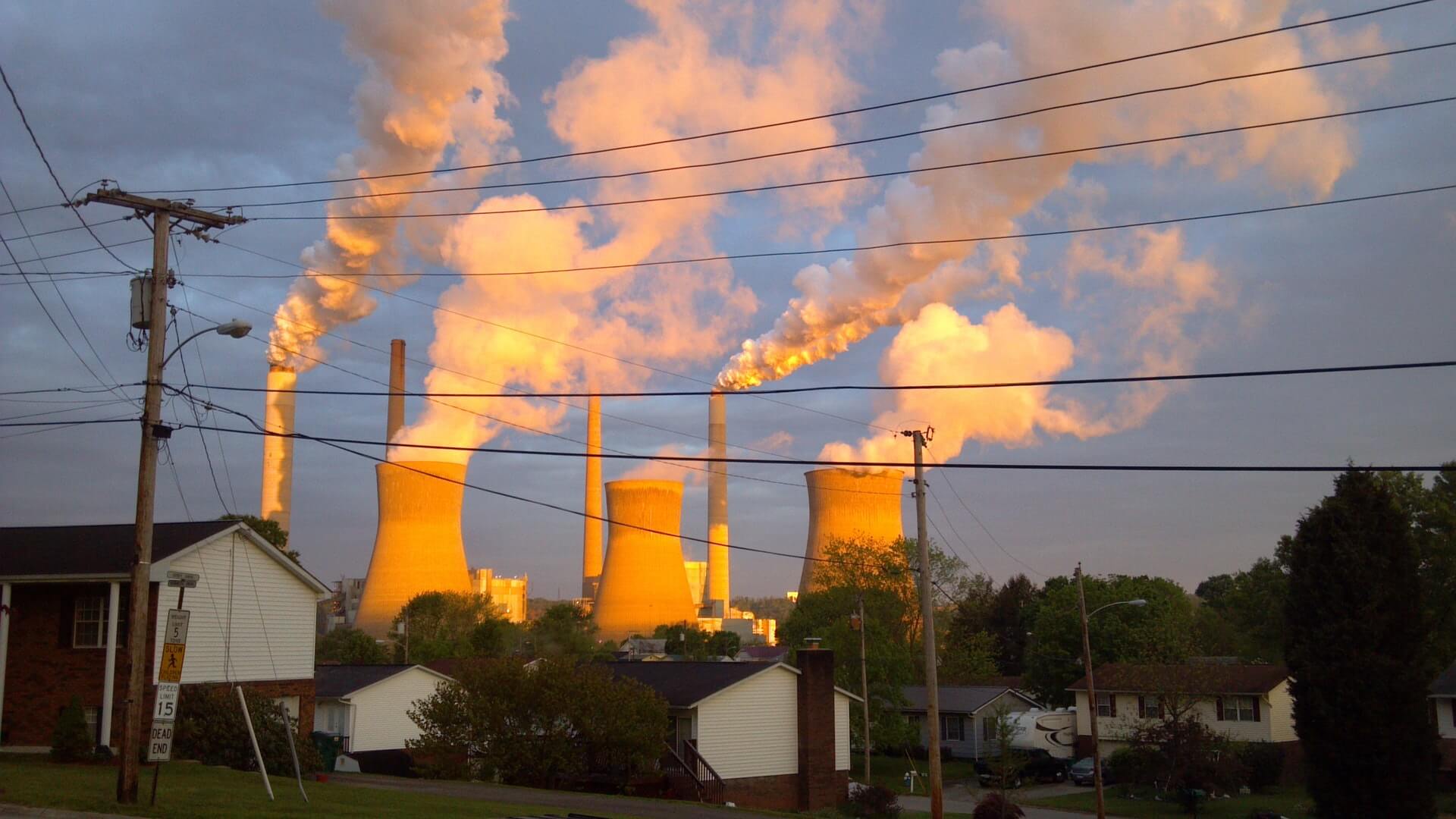What is electric power worth? The coal power industry is responsible for an incredible amount of suffering and death via air, soil, water pollution and land destruction. This is not to mention the gathering climate crisis apocalypse. This piece, by DGR South Asia organizer Salonika, discusses the cost of coal.
Reliance Power Accident in India Claims Six Lives
By Salonika
Amidst the increasing number of Covid-19 cases in India and talks from Prime Minister Narendra Modi on reopening selective industries, an accident in a coal-fired power plant washed away six people (three children, two men, and one woman), in Singrauli district in India . Three of them have been found dead, while three are still missing and presumed to be dead.
The flood was caused by the failure of a dam holding back “fly ash” sludge at the power plant owned by Reliance Power. Bodies were found as far as five kilometers (more than 3 miles) from the site of accident.
What Is Fly Ash?
Fly ash, along with bottom ash and “scrubber sludge”, is a by-product of burning pulverised coal. Coal ash consists of heavy metals (like arsenic, boron, lead, mercury) that are known to be carcinogenic and cause liver and kidney diseases. Mercury levels in blood samples near the Singrauli region were found to be six times greater than what is considered safe.
We know that fly ash is a global problem. Much of the fly ash produced from coal power stations is disposed of (stored) in landfills or ponds. Ash that is stored or deposited outdoors can eventually leach the toxic compounds into underground water aquifers. Once water is contaminated it affects the health of the water courses and wildlife.
Fly Ash Accidents
Given the hazardous nature of coal ash, it is usually mixed with water to keep it from blowing away and stored in an artificially created pond. Accidents occur when a breach in the dam causes the fly ash pond water to leak. Such accidents are not uncommon. This is the third incident of the type in Singrauli district (which hosts over a dozen such pond dykes) in the past 8 months: one happened in Essar Power Plant on August, and the other in NTPC plant on October.
Accidents like these comes at a substantive cost for the farmers’ sustenance as well. Essar accident caused major crop and house damage in nearby villages. NTPC incident washed away crops and cattle. The fly ash from the current accident has swallowed up entire fields in its path.
Fly ash accidents can also completely wipe out natural biodiversity in rivers and streams, killing fish, crayfish.
The Reliance Power accident.
In this particular case, speculations have been raised that the accident was caused by a heavy accumulation of fly ash in the pond. Due to the economic lockdown (as a result of the coronavirus), the waste materials could not be disposed. However, official reports reveal that the project responsible for the fly ash pond were sent repeated warnings for upgrade by the state government. A 2014 investigation reported a saturation of thermal power plants in the entire area and warned of potential damage.
Although India has delineated plans for scientific disposal and 100% utilization of fly ash since 1999, it has not yet been successful. Slurries have previously been dumped directly into water bodies used as sources of drinking water by locals. Local people have been fighting for resettlement rights of the people displaced by the thermal power project, and against the associated environmental pollution. In this case, suspicion has been raised regarding a planned sabotage in order to let the toxic waste run into the local water bodies.
The local authorities have declared that “strictest possible action” will be taken. Most likely, a minor fine will be given to the company. Meanwhile, Reliance Power has declared that the plant would continue to run normally.
What Are The Problems With Continuing Use of Coal Power Plants?
In this case, there is clear evidence of the company disregarding regulatory policies. Meanwhile, regulatory policies in most countries do not adequately address the risks associated with the storage of coal ash—let alone the existential risks of climate change. For example, in United States the Environmental Protection Agency under the Trump Administration loosened regulations on storage and disposal of coal ash in 2018. If put in place, these loosened regulations will increase instances of toxic waste being leaked into local water bodies, harming both human and natural communities.
The 100% utilization policy in India mandates all of coal ash to be used in what is termed “beneficial uses”. One prime example of these include mixing the coal ash with concrete. The associated health risks of living in a house built with coal ash has not been properly studied yet. It is likely that the risks would only be manifested as harmful to health years later, making it difficult for the cause to be determined.
From a biophilic perspective, the existence of coal ash itself is problematic. Coal ash is a byproduct of a coal power plant, and is multiple times more toxic than coal in its natural form, which would in itself provide a strong argument for stopping the creation of coal ash in the first place. However, driven from a growth imperative, coal power plants have become an integral part of the industrial civilization. From such a perspective, the repetitive failures of the storage ponds to contain the toxic material becomes a “necessary evil.” Generally, the health risks associated with toxification are limited to a small group of people, whereas the benefits are enjoyed by a larger group of (often privileged) individuals. In this case, all the major industries in Singrauli district are power plants: the human and natural communities there currently face the dire consequences of a third breach in the past year.
We cannot count on these industries or on the government to regulate themselves. They will have to be shut down by people’s movements.
Salonika is an organizer at DGR South Asia based on Nepal. She believes that the needs of the natural world should trump the needs of the industrial civilization.
Not all of us can on the front lines. But we can all contribute.
If we are going to ask people to take on substantial personal risk in pursuit of ecological justice, then we need to provide those revolutionaries with the training, legal, and financial resources they need. We need your help to do this.
Throughout history all resistance movements have faced ruthless enemies that had unlimited resources. And, unlike the past, now everything’s at stake.
 Here’s your opportunity to fund the resistance. Join those of us who cannot be on the front lines in supporting the struggle for life and justice. Your help literally makes our work possible.
Here’s your opportunity to fund the resistance. Join those of us who cannot be on the front lines in supporting the struggle for life and justice. Your help literally makes our work possible.


Coal perhaps tops the list of the thousands of substances (some naturally occurring, some manmade) that were rushed into industrial use without thinking about or testing their long-term effects. Civilization’s lust for “progress” (i.e., short-term utility and profit) totally overwhelm any rational concern for safety, or even survival.
A prime example is nuclear power. Before the first atom was “smashed,” there was serious concern among physicists as to whether it could be controlled, or if this first ever act of human violence at the atomic level might create a chain reaction that could not only destroy a city, but the entire planet that we and every other known life form inhabits. We got lucky that time — if you consider Hiroshima, Nagasaki, Chernobyl, Three Mile Island, Fukushima, and countless dangers that will be with us for millions of years “lucky.”
The next grand experiment with untested technologies is the “exciting” world of 5G, where microwaves only three times the length of x-rays will constantly be bombarding the bodies and brains of everything within 200 feet or so of 5G activity. This will allow such indispensable activities as permitting cars to “talk” to each other, and busy techies to program their home appliances to do things like vacuuming the living room and cooking dinner before they or we get home from work. Many of us in the thinking-ahead minority fully expect a pandemic of brain cancers to erupt, 10 or 20 years later. It is also quite likely to accelerate the decline in the human sperm count– which since 1975 or so, has been plummeting at a rate that should make human reproduction in developed countries virtually impossible by 2100 . (But maybe that’s a good thing.)
It recently came to my attention that one tiny nation — Bhutan — has more or less made sustainability a legal requirement and fundamental right. Among other things, that Himalayan country (which is about the size of Switzerland) requires 60% of its land to remain forested, so that natural CO2 sequestration will always exceed CO2 emissions. The report also noted that profit is considered an “alien” concept in Bhutan. Somewhat better known is that the Bhutanese government’s most important branch is the Ministry of Happiness, which regularly polls the population on public contentment. And despite streets with few cars, a slow pace of life, and a “low standard of living” (in terms of gadgets, electric appliances, multiplex cinemas, fast food joints, etc.), the most recent survey found that 75% of Bhutan’s people are happy with their lives.
This concept could lead to some revolutionary thinking and action in the rest of the world. Suppose we began demanding a sustainable planet as a legal right. Imagine mass demonstrations to reforest 60% of the rest of the world, with negative CO2 emissions as a fundamental global right. Suppose all enterprises above the mom and pop level had to be run as non-profits.
That would be a revolution indeed. And there is no time like the present — with much of the world’s exploitive commerce already slowed to a crawl by COVID-19 — to demand a sustainable planet as a universal concept and way of life.
@Mark Bhutan has taken some impressive steps in terms of going against the usual trend of the growth-driven economy. They use a “Gross Happiness Index” instead of GDP/GNP as an indicator for progress. In terms of tourism, they have declared that they would focus on quality over quantity, increasing taxes on tourists in a deliberate attempt to prioritize sustainability over getting more tourists in the country. From an anti-civilization perspective, they do have their own environmental concerns, of course. Nevertheless, in the context of current global economy, these are some impressive feats for a relatively small country. Like you said, the Covid-19 crisis could be an opportunity for adopting similar approaches, or even starting a bigger revolution.